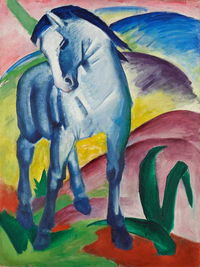
Der Blaue Reiter (The Blue Rider) Quiz
These works were produced by members of the German Expressionist movement known as Der Blaue Reiter in the years leading up to World War I. Match each painting with its creator.
by looney_tunes.
Estimated time: 3 mins.









